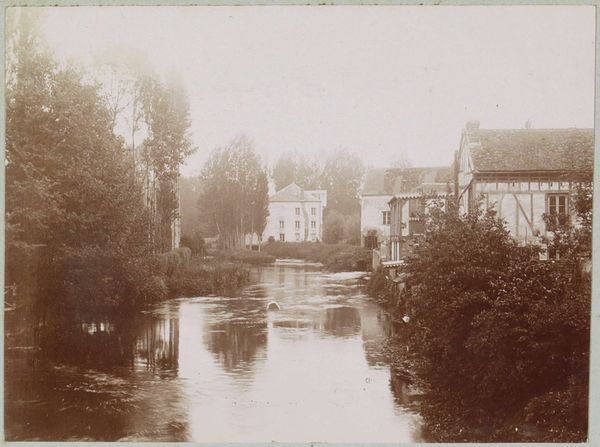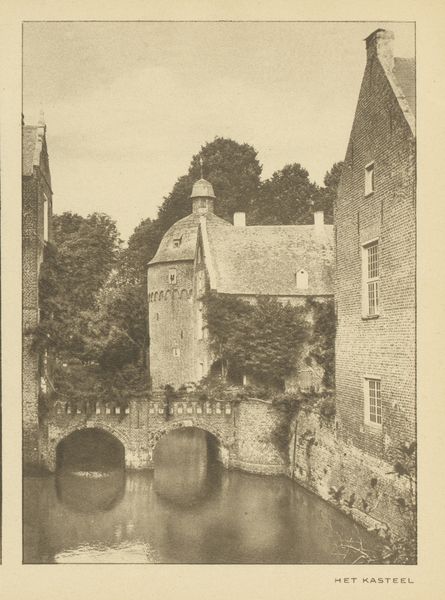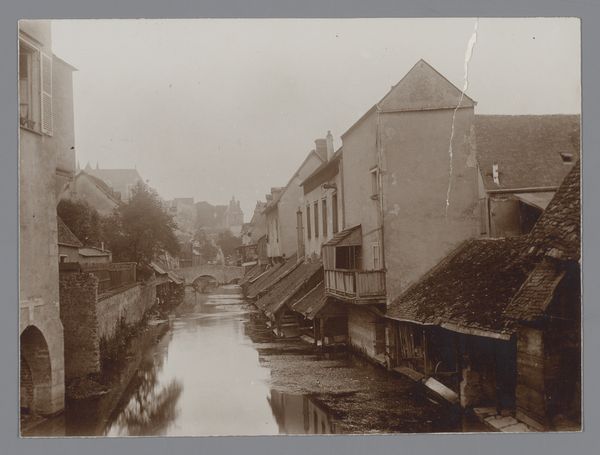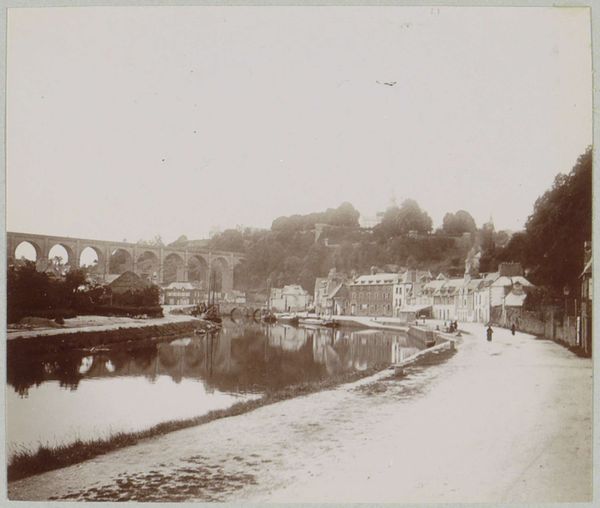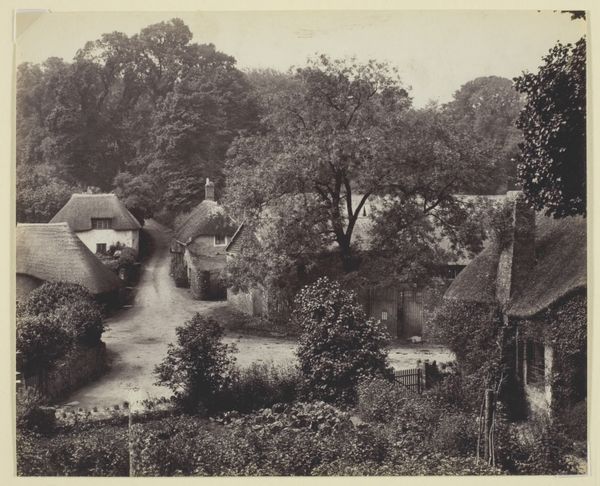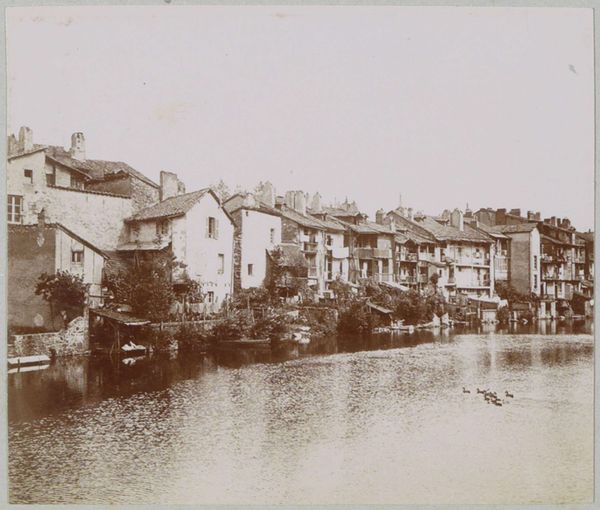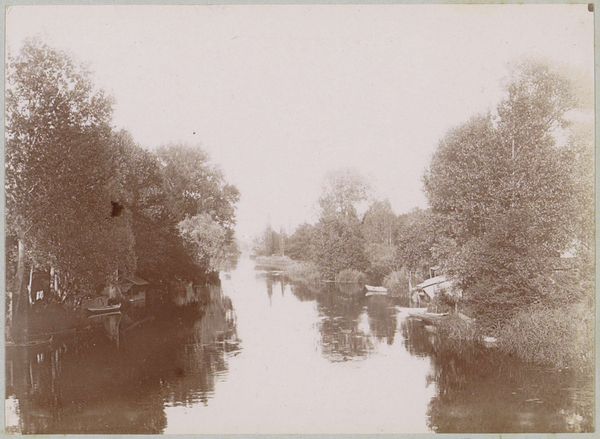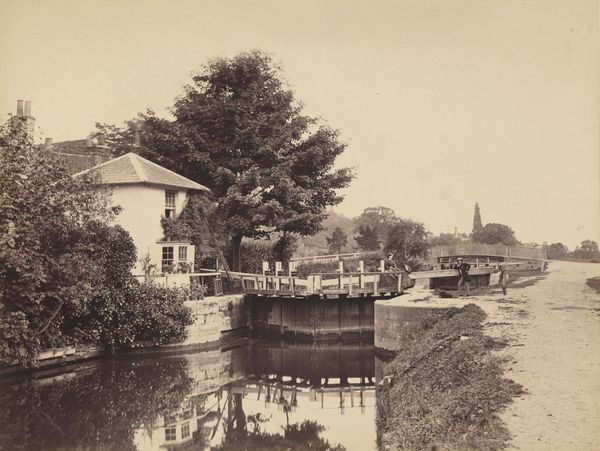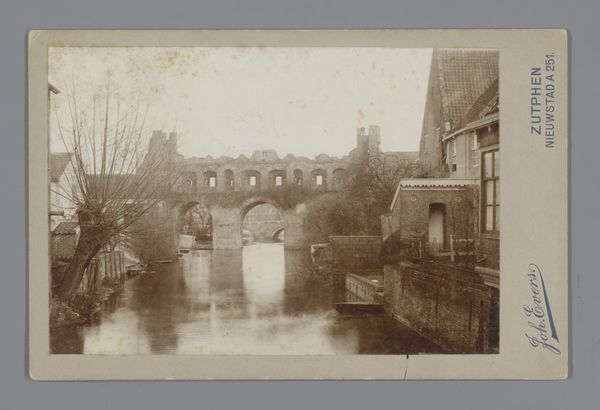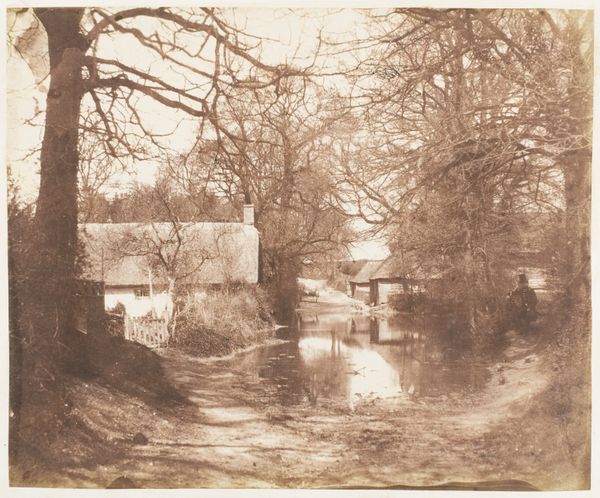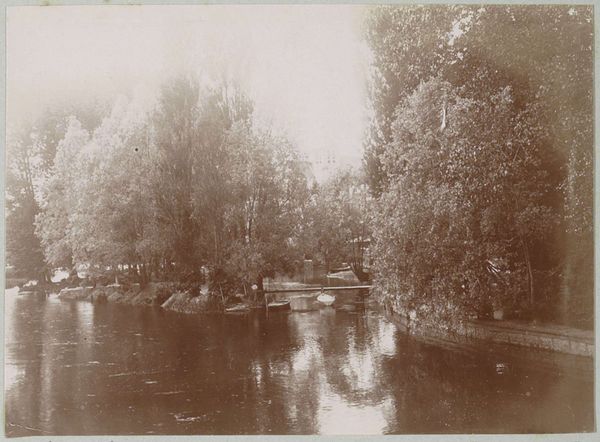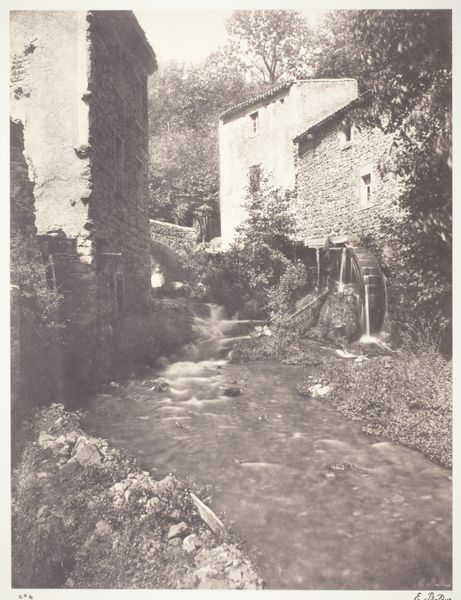
Dimensions: height 79 mm, width 109 mm
Copyright: Rijks Museum: Open Domain
Curator: Welcome! We’re standing before a beautiful, serene photograph from 1897, taken by Delizy. It's titled "Gezicht op de rivier en oevers in Moret-sur-Loing," currently held in the Rijksmuseum. Editor: My initial feeling is nostalgia. There's a stillness to the scene. The sepia tones give it a wistful air, like a faded memory. What stands out to me are the figures almost hidden amongst the foliage. Curator: Indeed. What’s compelling here is how this photographic work contributes to our understanding of Impressionism. It captures not just the visual reality of the landscape, but a mood, an atmosphere. We see the town of Moret-sur-Loing as experienced. How do you interpret those figures? Editor: Their inclusion makes it an artwork that questions, perhaps unintentionally, the leisure class and their access to picturesque scenes versus the working people and their exclusion. What stories do these walls hold for the workers within, or on the edges of them, or altogether cut-off from access to the beautiful scenes depicted in photography such as this? The photograph prompts discussion of urban development, ownership, and questions about class boundaries and access. Curator: Certainly. By 1897, photography was no longer a novelty but an established medium, used to reinforce specific notions of place, and of societal order. The framing and focus tell us what aspects are considered worthy of preserving. What this tells me, more than an idyllic place is also an insight to who or what are valued, or deliberately omitted, through the social norms of this era. Editor: And let's not ignore the environmental aspect. Rivers are essential to human life. Who had access, who were prevented from access? The photograph evokes a kind of quiet melancholy. The light suggests the softness, perhaps fragility, of that social order, and its environmental implications. It makes me think of who has profited from access, and who was excluded. Curator: An astute observation. Ultimately, “Gezicht op de rivier en oevers in Moret-sur-Loing" goes beyond a pretty landscape. Editor: Exactly. It's an image of a society reflected in its waters. An era defined not just by what is shown, but by who controlled the representation. Thank you for allowing this moment to consider whose experience we center.
Comments
No comments
Be the first to comment and join the conversation on the ultimate creative platform.
